Thursday is ‘fold day’ here at Mountain Beltway.
Let’s take a look at some folds I saw last weekend in New York City. We’ll start with a bunch seen in the Manhattan Schist in Central Park. Here’s an example of the foliation in the schist. It’s got finer-grained regions and coarser, schistier regions with big honking muscovite flakes. Metamorphic petrologists: Does this correspond to paleo-bedding? (i.e. quartz-rich regions that metamorphose less spectacularly, and mud-rich regions that converted more totally to muscovite during metamorphism?)
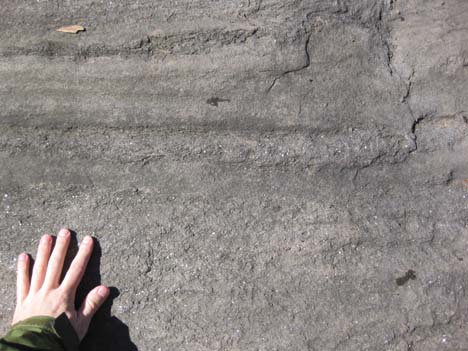
Anyhow, here’s what it looks like when it’s folded (accented with a small granite dike):
And another, with some boudinage thrown in for flavor:
This was one of the best outcrops I saw that weekend (on the edge of the ‘lake’), but it was inaccessible to closer photography. Sorry about all the branches in the image. What you’re looking at here is a series of folds with axes plunging at ~45° towards the lake:
Crudely annotated version:
Granite dike:
Boudinaged granite dike:
Folded and boudinaged granite dike #1:
Folded and boudinaged granite dike #2:
Lastly, here’s a couple of folds from inside the American Museum of Natural History. A metaconglomerate:
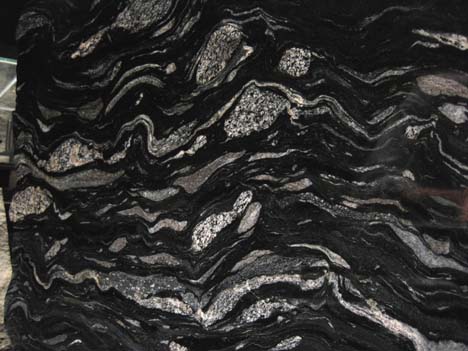
A little model mountain belt made out of compressed sand layers:
The thing that really struck me about this sand model is the folds visible in the green and yellow central part of the mountain belt: There are refolded folds there. The lower-central antiform with dark green atop yellow is the best example. I had the idea in my head that two generations of folds meant two generations of deformation, but here you’ve got two generations of folds resulting (presumably) from a single episode of ‘mountain building.’
Such beautiful complexity! I want a sand model like this for my lab.

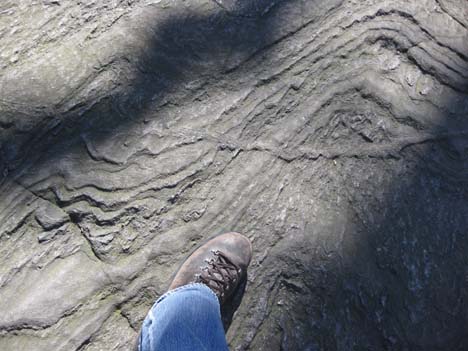
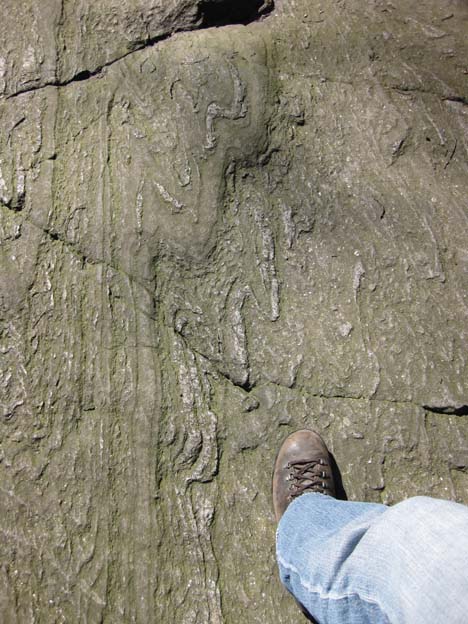

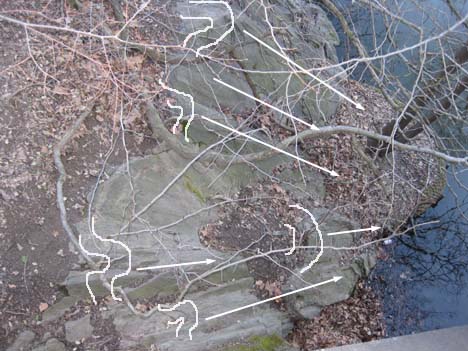
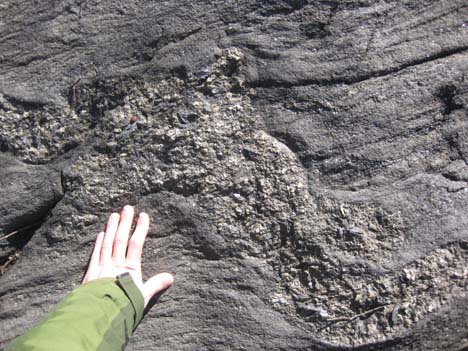

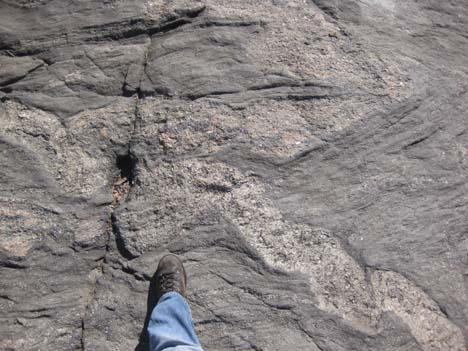
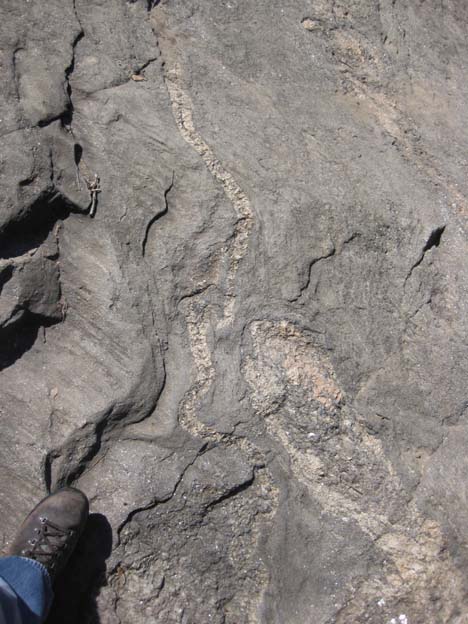
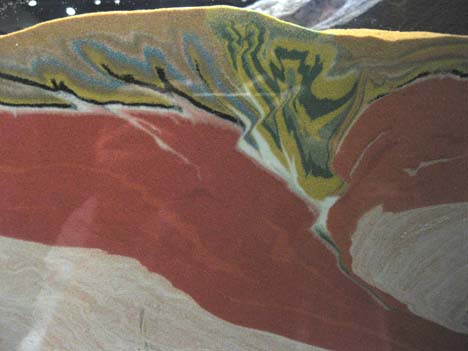
The layering is probably paleo-bedding (for exactly the reason you gave), but it’s hard to know for sure. (I usually look for sedimentary structures as well, though the hotter the rock, the less likely they are to be preserved.)
And yeah, if folds rotate as they form (and in a lot of strain fields, they should), then you can get multiple generations of deformation in the same tectonic episode. (That’s important to keep in mind for interpreting microstructures, too.)
Hi, Callan
I agree with Kim in the two comments, but I want to add my bit on the sand model folds; most of the thinned green flanks of the folds in the yellow-green area may represent the initial stages of thusts. If the stress field remains constant (as is usually set in a sand model), some parts of the folds (the flanks) rotate to the position where conjugate faults can develop, evolving to thrust structures. It´s the same for the left part, but there the thrust sheets have displaced a longer distance.